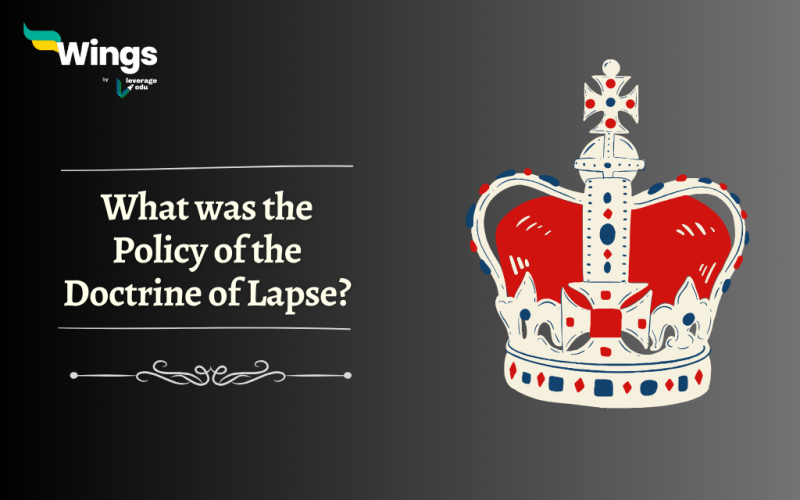The ‘Doctrine of Lapse’ is an annexation policy adopted by the British East India Company till 1858. This policy was related to the Princely kingdoms which had the motive of annexing the princely states which either did not have an heir or had a disputed reign. James Broun Ramsay, the first Marquess of Dalhousie initiated this policy.
About the Doctrine of Lapse
Table of Contents [show]
Lord Dalhousie came to India as a governor-general in 1848 and ruled till 1856. He was an expansionist governor-general of the British in the Indian subcontinent.
For a very long time in India, if the king died his son would take over the reign. In case the king does not have a son, he will adopt someone to take control of the kingdom. However, Lord Dalhousie said that if a king is adopting the heir it will be illegal. A share in the personal property of the king could be given to the adopted individual but the whole state would be annexed.
Also Read- Government of India Act 1858: Background, Key Features
He devised the Doctrine of Lapse, which stated that any territory could be annexed if the king was dead or the princely state did not have a male heir. Under this annexation policy, certain kingdoms were annexed. Following are a few of them.
| Princely State | Year of Annexation |
| Satara | 1848 |
| Sambalpur | 1850 |
| Udaipur | 1852 |
| Bagpur | 1853 |
| Jhansi | 1854 |
| Awadh | 1856 |
Impact of Doctrine of Lapse
Since the British had control over large parts of India, the kings of the princely state had no other option other than to surrender. Although many Indians were against this policy, in front of the British power, people gave up. Therefore, it became one of the major reasons for the War of 1857.
Related Blogs
This is everything about the policy of doctrine of lapse. For more such interesting and informative topics on Indian History and more, stay tuned to our General Knowledge section. If you want to know more about studying abroad, reach out to our experts on Leverage Edu!
 One app for all your study abroad needs
One app for all your study abroad needs















 45,000+ students trusted us with their dreams. Take the first step today!
45,000+ students trusted us with their dreams. Take the first step today!
